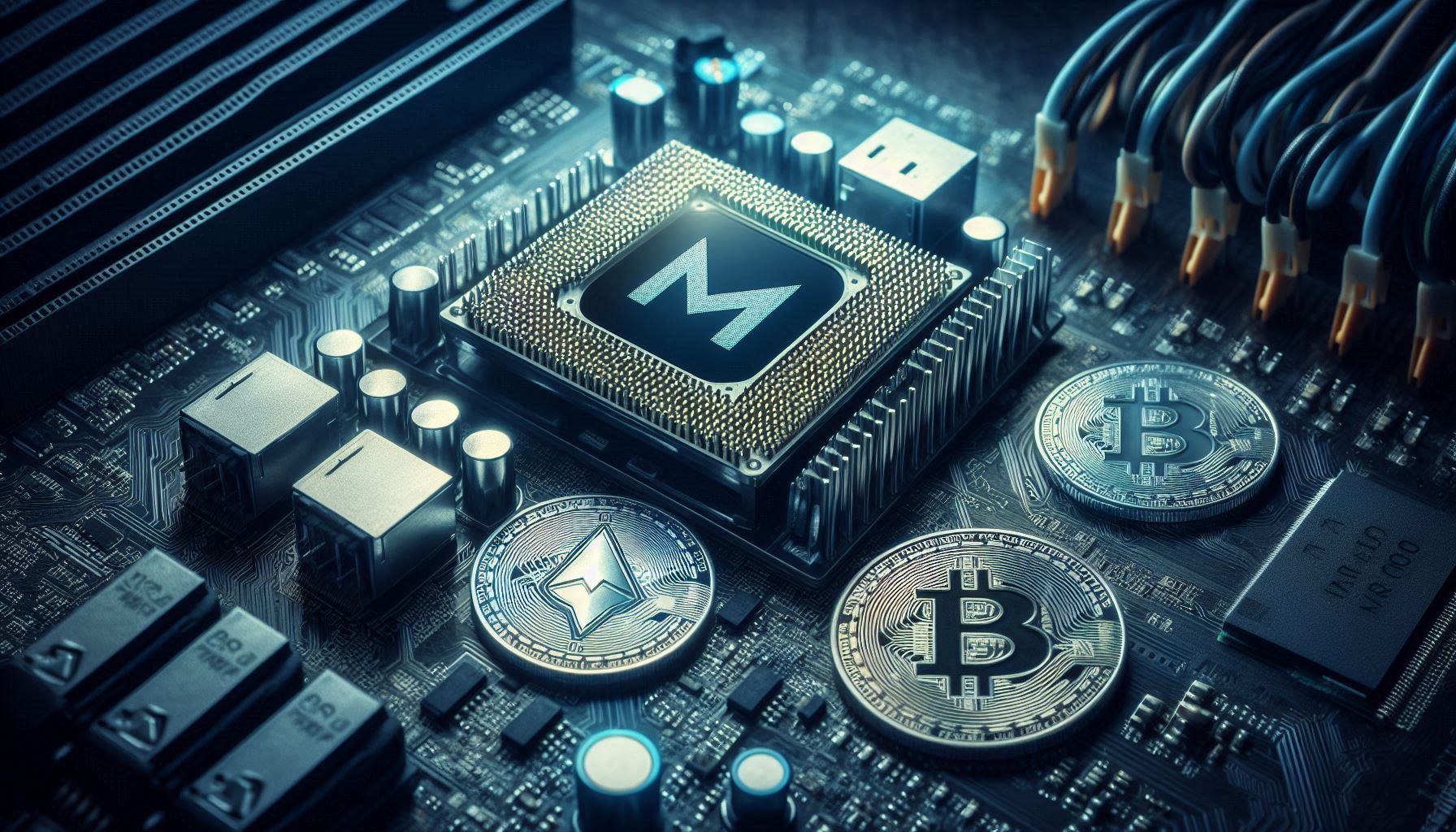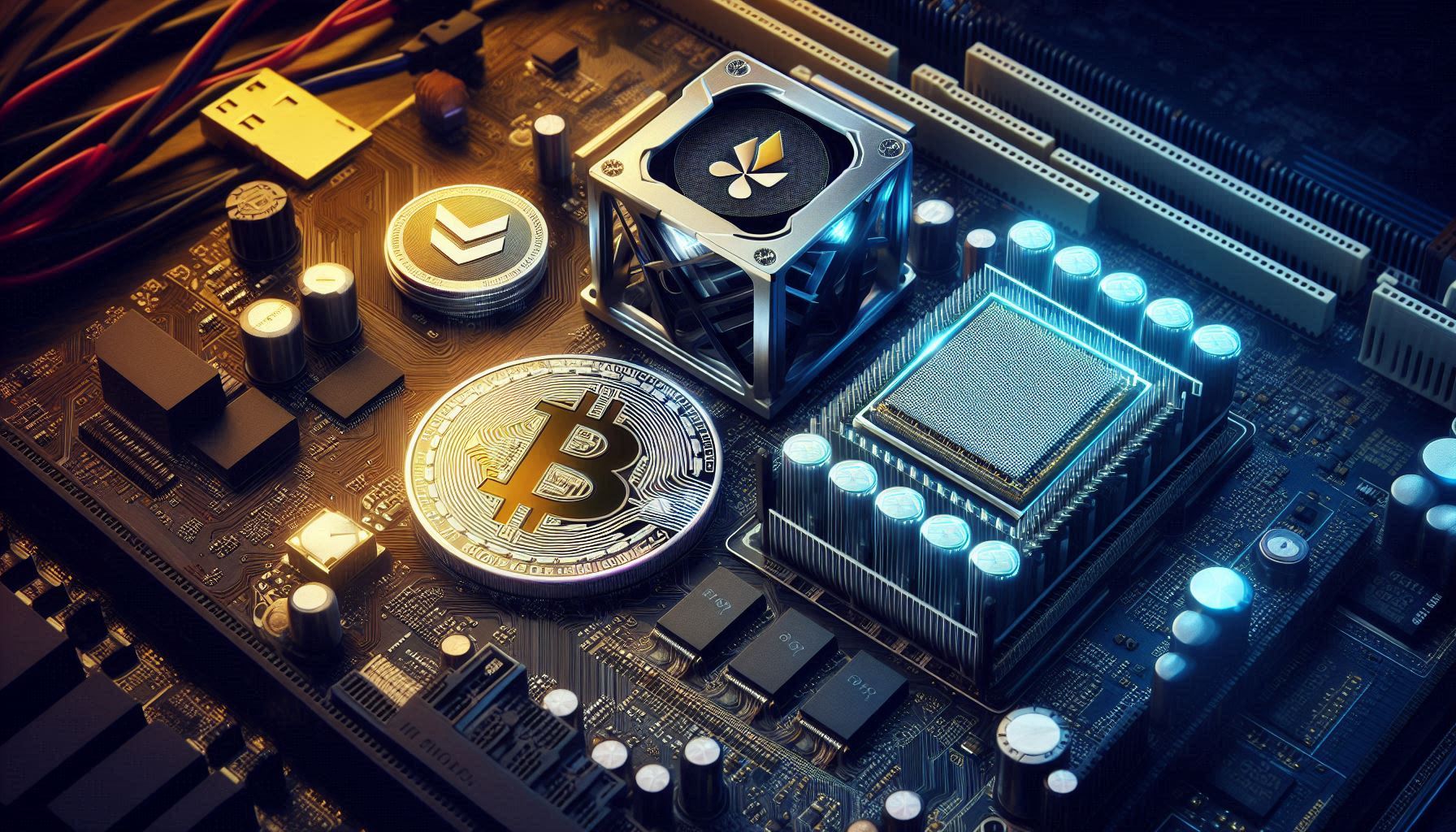What is CPU miner
A CPU miner refers to a mining program or computer setup that utilizes the central processing unit (CPU) to mine cryptocurrencies. This was the earliest and most accessible form of crypto mining, allowing almost anyone with a standard computer to participate.
How Does CPU Mining Work?
In CPU mining, your computer’s processor solves complex mathematical puzzles to validate and add new blocks to a cryptocurrency’s blockchain. When your CPU finds a valid solution, you receive a reward in the specific coin you’re mining. CPUs can perform several million calculations per second, although their hashrate is far lower compared to GPUs or ASIC miners.

CPU mining software and hardware
-
Software: Popular CPU mining programs include cpuminer, XMRig, and minerd.
-
Configuration: Performance depends on the number of cores, thread support (hyperthreading), and the overall speed of your processor.
Cryptocurrencies That Can Be Mined With CPUs
In 2025, most high-value coins (like Bitcoin) can no longer be mined competitively with a CPU due to massive network difficulty and competition from specialized hardware. However, several cryptocurrencies remain accessible to CPU miners, primarily because they use ASIC/GPU-resistant algorithms. Examples include:
-
Monero (XMR): Uses RandomX, designed to remain resistant to ASICs and GPUs, making CPU mining a level playing field.
-
VerusCoin (VRSC): Strongly CPU-friendly and used by hobbyists.
-
Zephyr (ZEPH), DuinoCoin (DUCO), Yadacoin (YDA), ArQmA, Wownero: Other examples of CPU-mineable altcoins.
-
Newer or experimental coins often launch with CPU-friendly mining to support decentralization and grassroots participation.
Profitability, Complexity & Costs CPU mining
Profitability of CPU mining:
-
CPU mining is generally low-yielding due to increased mining difficulty and energy costs. Most crypto coins have shifted to being dominated by GPUs or ASICs, making CPU mining largely unprofitable for popular assets.
-
Exceptions exist, such as Monero and Zephyr, which are intentionally designed to encourage CPU mining by adjusting algorithm complexity and resisting more powerful hardware.
Complexity of CPU mining:
-
Most CPU miners are relatively easy to set up—plug-and-play, with a graphical or command-line interface.
-
No special knowledge is needed beyond basic computer literacy, making it accessible to beginners.
Costs and Returns of CPU mining:
-
Electricity costs: CPUs consume anywhere from 50W–250W when mining; with low coin rewards, you may pay more for power than you will earn.
-
Hardware longevity: Prolonged crypto mining can degrade CPUs due to sustained high loads and temperature.
-
Real-world returns: As of August 2025, profitable coins for CPUs can bring in cents to a few dollars per day on high-end chips—a small amount that can easily be wiped out by electricity, especially in countries with higher rates.
| CPU Model | Coin (Example) | Estimated Hashrate | Profit 24h (Aug 2025) |
|---|---|---|---|
| AMD Ryzen 5 3600 | Zeph | 8.8 KH/s | $0.16 |
| AMD Ryzen 9 5950X | Zeph | 22.0 KH/s | $0.44 |
| AMD EPYC 7742 | Monero | 45.0 KH/s | $0.89 |
| Intel i9 12900K | Zeph/Monero | 11.6 KH/s | $0.17 |
Note: Real profit depends on coin price, network difficulty, and electric cost
A Brief History of CPU Mining
-
2009–2010: All Bitcoin mining was possible (and profitable) with standard CPUs. Satoshi Nakamoto and early adopters mined thousands of BTC this way, as the network was small and competition was nonexistent
-
2010–2011: As more people joined, GPU mining took over due to much higher efficiency, rendering CPU mining nearly obsolete for Bitcoin and its forks.
-
Today: CPU mining persists for coins with ASIC-resistant algorithms (like Monero/RandomX) or for learning/testing purposes. For most major coins (e.g., Bitcoin, Litecoin, Dogecoin), CPU mining is entirely obsolete

CPU mining software and hardware
Advantages & Disadvantages of CPU Mining
Advantages:
-
Low barrier to entry: Any standard PC can participate—good for beginners and education.
-
Supports decentralization in coins specifically designed for CPU mining.
-
Low hardware investment compared to GPUs/ASICs.
Disadvantages:
-
Low profitability—electricity costs often exceed earnings.
-
Not viable for most major cryptocurrencies.
-
Hardware wear and risk of damage from sustained high use.
-
Highly competitive even for CPU-mineable coins; profits decrease as more miners join.
CPU mining is the origin of all cryptocurrency mining and still serves as an educational gateway or a way to support niche, community-oriented projects. For most people today, it’s not profitable and cannot compete with GPU or ASIC mining for mainstream coins. However, in select cases—especially coins like Monero or Zephyr—CPU mining still has a valuable role in keeping mining decentralized and accessible. If you wish to try it, always calculate your expected profits versus electricity and consider mining as much for learning and experimentation as for income.

